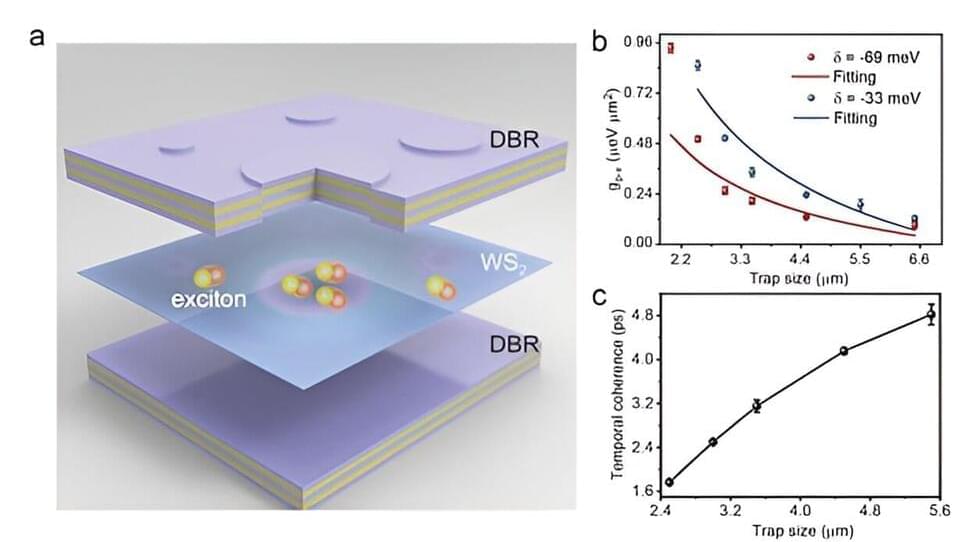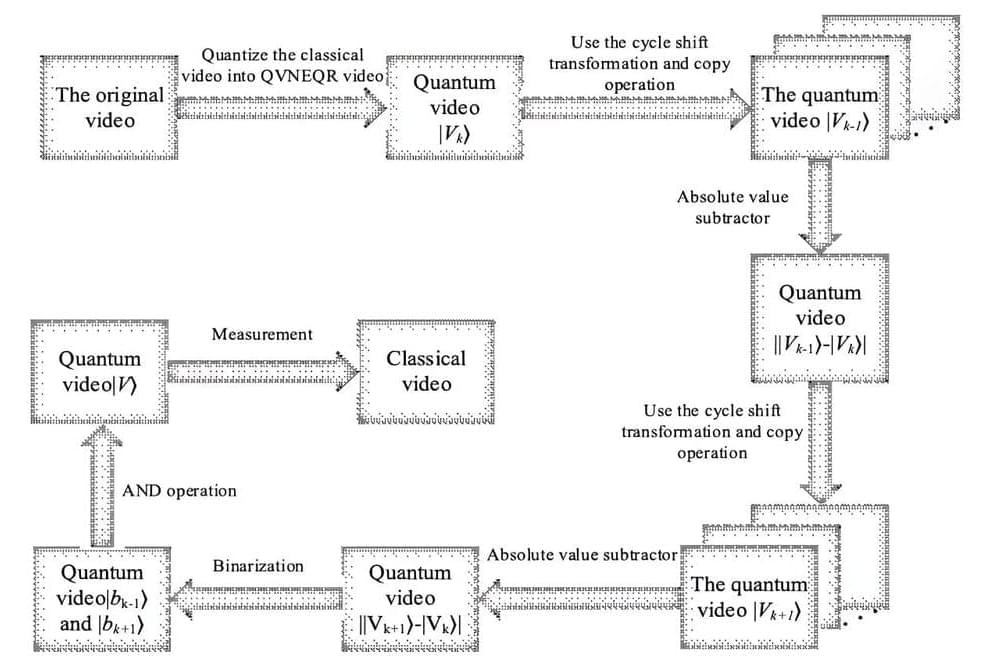Regenerative medicine researcher Kristy Red Horse’s discoveries may someday help damaged hearts heal better. Her stewardship of her Native American heritage may advance science in other ways too.



Exciton polaritons, hybrid quasiparticles caused by the strong exciton-photon coupling, constitute a unique prototype for studying many-body physics and quantum photonic phenomena traditionally in cryogenic conditions.
Atomically thin transition-metal dichalcogenides (TMDs), as exceptional semiconductors with room-temperature operations, have received much attention due to their fascinating valleytronics features and strong exciton resonance. Nevertheless, in TMDs microcavities, the overall nonlinear interaction strength of polaritons can be insignificant compared to that of other wide-bandgap semiconductors.
Considerable effort has been devoted to improving the nonlinear interactions, for instance, by resorting to 2s states, trion, and moiré or dipolar excitons. However, these excitons quickly dissipate at elevated temperatures and then destroy the strong coupling condition. Thus, achieving an appropriate combination of strong nonlinearity together with the thermal stability of the TMDs polaritons is highly sought after for realistic polariton-based integrated devices.

Computer vision algorithms have become increasingly advanced over the past decades, enabling the development of sophisticated technologies to monitor specific environments, detect objects of interest in video footage and uncover suspicious activities in CCTV recordings. Some of these algorithms are specifically designed to detect and isolate moving objects or people of interest in a video, a task known as moving target segmentation.
While some conventional algorithms for moving target segmentation attained promising results, most of them perform poorly in real-time (i.e., when analyzing videos that are not pre-recorded but are being captured in the present moment). Some research teams have thus been trying to tackle this problem using alternative types of algorithms, such as so-called quantum algorithms.
Researchers at Nanjing University of Information Science and Technology and Southeast University in China recently developed a new quantum algorithm for the segmentation of moving targets in grayscale videos. This algorithm, published in Advanced Quantum Technologies, was found to outperform classical approaches in tasks that involve the analysis of video footage in real-time.

Dementia affects more than 55 million people around the world.
A number of factors can increase a person’s risk of developing dementia, including high blood pressure, poor sleep, and physical inactivity.
Meanwhile, keeping cognitively, physically, and socially active, and limiting alcohol consumption, can reduce the risk.
Recently, a large Swedish study observed that chronic stress and depression were linked to a higher risk of developing Alzheimer’s disease, the most common form of dementia. The researchers found people with a history of both chronic stress and depression had an even greater risk of the disease.
Globally, around 280 million people have depression, while roughly 300 million… More.



Sabine Hossenfelder investigates life’s big questions through the lens of physics, particularly Einstein’s theory of special relativity. She highlights the relativity of simultaneity, which states that the notion of “now” is subjective and dependent on the observer. This leads to the block universe concept, where past, present, and future all exist simultaneously, making the past just as real as the present.
Hossenfelder also emphasizes that the fundamental laws of nature preserve information rather than destroy it. Although information about a deceased person disperses, it remains an integral part of the universe. This idea of timeless existence, derived from the study of fundamental physics, offers profound spiritual insights that can be difficult to internalize in our everyday lives. As a result, Hossenfelder encourages people to trust the scientific method and accept the profound implications of these discoveries, which may reshape our understanding of life and existence.
As a physicist, Hossenfelder trusts the knowledge gained through the scientific method and acknowledges the challenge of integrating these deep insights into our daily experiences. By contemplating these profound concepts, we can potentially expand our understanding of reality and our place within it.
Speculation on Agi rumors for early 2025.
Patreon: https://www.patreon.com/daveshap.
Substack: https://daveshap.substack.com/
LinkedIn: https://www.linkedin.com/in/dave-shap-automator/
GitHub: https://github.com/daveshap.
Open MURPHIE: https://github.com/daveshap/Open_MURPHIE
ACE Framework: https://github.com/daveshap/ACE_Framework
The most common screening test for prostate cancer — a measure of prostate-specific antigen, or PSA, levels — so often suggests cancer where there is none that clinical guidelines no longer recommend the test for men over 70 and leave the decision up to younger patients.
Scientists at Stanford Medicine and their collaborators aim to make PSA screening more accurate — by calibrating PSA levels to each man’s genetics. Applying this type of personalization could significantly reduce overdiagnosis and better predict aggressive disease. Their research was published June 1 in Nature Medicine.
In addition to the regular blood-based PSA test, such personalized screening would require a germline genetic test, typically done on saliva, blood or cheek swab samples, to look for inherited genetic variants that affect PSA levels.
